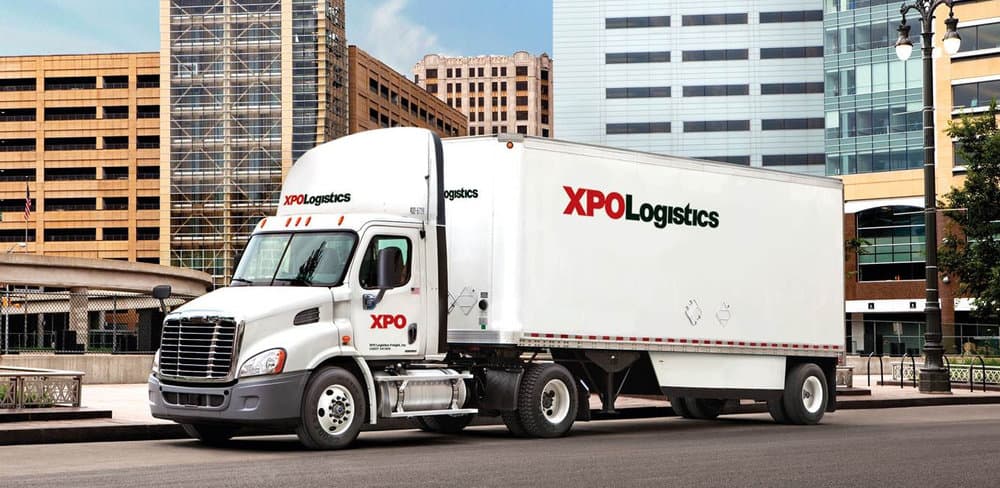
XPO Logistics (NYSE: XPO) continues to innovate through technology and the company has just introduced four additional technological tools that it says will provide a $100 million incremental increase in operating profit within two years. It also this morning announced a new driver training program for military veterans.
The driver training program will be offered free to military veterans and members of the reserve forces to help transition them into a driving career.
For individuals who trained as drivers in the military but have limited “behind the wheel” experience, XPO is offering an accelerated four-week driver training program. Another program will help those whose military experience did not include work in transportation attain their Class A commercial driver’s license (CDL-A).
Those with driving experience in the military who participate in the accelerated training program and drive for XPO pay no tuition or other fees for classroom and on-the-road training. The company’s 12-week, 240-hour driver training program for other military individuals is also free.
“We value our veterans and the skills they earned through their military service. We want to help them put that experience to work here at XPO in careers that fit their lifestyle and their goals. XPO is growing, and we’re providing opportunities for veterans to grow with us,” said Meghan Henson, chief human resources officer.
On the technology front, the four tool, all aimed at its less-than-truckload operations, are of its LTL 2.0 optimization plan.
“Our technology is purpose-built to continuously improve customer service, control costs and leverage our scale,” the company noted in a recent investor presentation, noting that XPO spends $450 million a year on technology.
XPO Logistics was just named to the FreightWaves’ Research Institute Freight.Tech 100, which recognizes the most innovative and disruptive companies in freight.
The four new technologies announced last week feature two that are already being tested, explained Mario Harik, CIO.
“Our technology is spurring growth across all the services we offer. We’ve pinpointed four high-impact areas where we can lead the LTL industry in transforming traditional approaches to serving customers. Two of these innovations – dynamic route optimization and linehaul bypass – are already in pilot. Given our capacity for innovation, our opportunity for creating value in LTL is nearly limitless,” he said.
Linehaul bypass uses algorithms to assemble truckloads dedicated to direct movements of LTL freight, the company said. The goal is to reduce multiple stops to a single location, thereby improving the efficiency of company trucks and trailers and purchased linehaul services.
Another tool in pilot testing is dynamic route optimization for pickup and delivery. Utilizing artificial intelligence tools, the technology sets a sequence for an LTL driver’s pickups and deliveries, and then based on real-world scenarios such as traffic congestion and construction, dynamically rerouting drivers to maximize time and driver and asset utilization.
Also using artificial intelligence, a new load-building tool will assist cross-dock operators when loading inbound pallets. Taking advantage of computer vision technology, the tool will ensure pallets are not only loaded into the right trailers, but in the right sequence for the best possible unloading times, helping improve driver and vehicle efficiency.
Finally, the last tool announced is a pricing algorithm technology that uses machine learning capabilities to predict LTL price elasticity. The technology is being designed to forecast market conditions for future dates based on real-time supply and demand, as well as historical data and XPO capacity levels, the company explained. This will help enhance the speed and accuracy of responses to customer RFPs.
XPO’s LTL business has been on a roll lately, and the new tools are designed to keep that success moving forward. According to the company, its LTL network covers 99% of all zip codes in the U.S. and moves approximately 20 billion pounds of freight a year for 20,000 LTL customers.
The company has boosted its LTL sales force in North America through a $15 million investment which should generate additional “ramp up in operating income growth” in the fourth quarter, the company’s investor presentation noted. In the third quarter, XPO’s LTL business realized an improvement of 220 basis points in adjusted operating ratio to 85.4%, versus 87.6% in 2017. LTL adjusted operating income has more than doubled since XPO acquired the business in October 2015, and should generate over $1 billion in EBITDA within three years, it said.
In terms of technology deployments, XPO has introduced intelligent robots in warehouses, the XPO Direct shared-space distribution network, voice integration with Amazon and Google to track home deliveries of heavy goods, and the launch of the XPO Connect digital freight marketplace with the Drive XPO mobile app for carriers recently.
